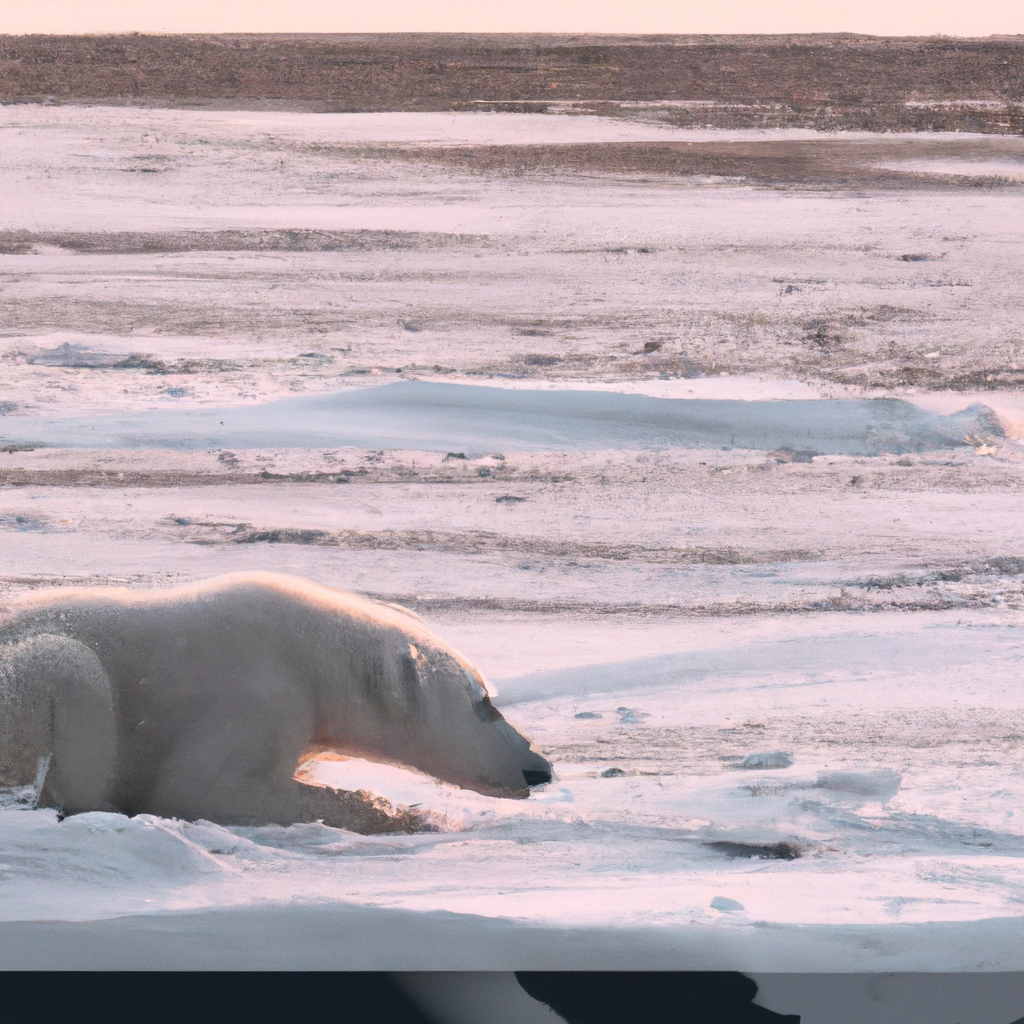Climate change is one of the most pressing issues of our time, and it affects all forms of life on Earth. One of the most iconic animals that are impacted by climate change is the polar bear. As the Arctic ecosystem is rapidly changing due to global warming, the polar bear’s survival is becoming increasingly threatened. In this article, we will explore the impact of climate change on polar bears and the Arctic ecosystem.
Climate Change and Polar Bears
Polar bears are a keystone species of the Arctic ecosystem, and they are highly dependent on sea ice for hunting, breeding, and resting. However, as the Earth’s temperature continues to rise due to greenhouse gas emissions, the Arctic sea ice is rapidly melting. According to the National Snow and Ice Data Center, the Arctic sea ice extent is declining at a rate of 12.8 percent per decade. This loss of sea ice has a direct impact on the polar bears’ ability to hunt and their overall survival.
Sea Ice Loss
The loss of sea ice affects polar bears in several ways. Firstly, they rely on sea ice as a platform to hunt their primary prey, which is the ringed seal. As the sea ice melts, the ringed seals move to new areas, making it harder for polar bears to find and catch them. This leads to a decline in the polar bears’ body condition, which, in turn, affects their reproductive success. Secondly, the loss of sea ice also affects the polar bears’ ability to travel long distances. In the past, they could use the sea ice as a bridge to move from one area to another. However, as the sea ice is melting, they are forced to swim longer distances, which can be exhausting and dangerous. This can lead to higher mortality rates, especially for young cubs.
Global Warming and the Arctic Ecosystem
The Arctic ecosystem is one of the most fragile ecosystems on Earth, and it is highly sensitive to changes in temperature. As the Earth’s temperature continues to rise due to global warming, the Arctic ecosystem is undergoing rapid changes. The Arctic sea ice is not the only thing that is melting; the permafrost is also thawing, which has a significant impact on the Arctic ecosystem. The permafrost is a layer of frozen soil, and it contains a large amount of carbon. As it thaws, the carbon is released into the atmosphere, which contributes to the greenhouse effect, leading to more warming. Moreover, the thawing permafrost also affects the vegetation in the Arctic, which is a crucial food source for many animals, including the polar bear. As the vegetation changes, it affects the food chain, leading to a cascade of effects.
Endangered Species
The polar bear is classified as a vulnerable species by the International Union for Conservation of Nature (IUCN). This means that they are at high risk of extinction in the wild. The loss of sea ice due to climate change is one of the main reasons for their decline. According to a study published in the Journal of Wildlife Management, the polar bear population in the Southern Beaufort Sea declined by 40 percent between 2001 and 2010. This decline is attributed to the loss of sea ice, which affects their hunting and breeding.
Conclusion
In conclusion, climate change is having a significant impact on polar bears and the Arctic ecosystem. The loss of sea ice due to global warming is affecting the polar bears’ ability to hunt and travel, leading to a decline in their population. Moreover, the thawing permafrost is affecting the vegetation in the Arctic, which is crucial for the food chain. It is important to take immediate action to reduce greenhouse gas emissions and mitigate the effects of climate change to ensure the survival of the polar bear and other vulnerable species.







